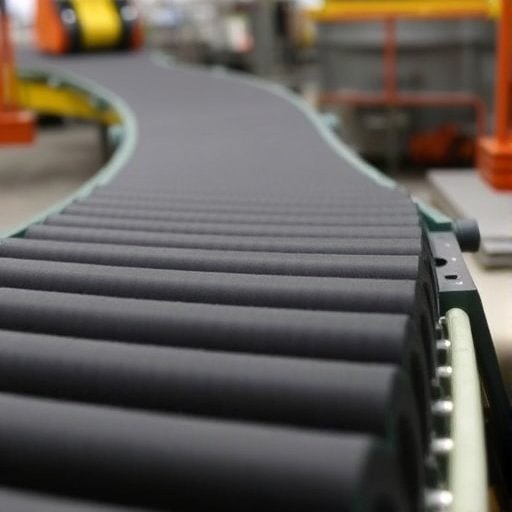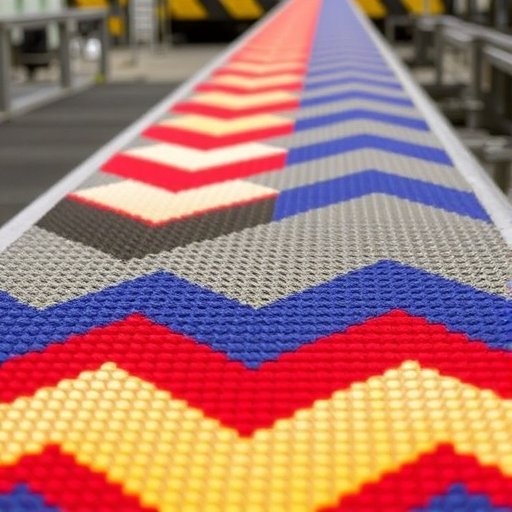Inhaltsübersicht
- Introduction: Understanding Bale Elevators
- Factors That Affect the Cost of a Bale Elevator
- Size and Capacity
- Lifting Technology
- Customization and Special Features
- Brand and Manufacturer Reputation
- Maintenance and Service Costs
- Types of Bale Elevators and Their Price Ranges
- 1. Vitrans LP/L Short Cycle Time Pallet Lifter
- 2. Standard Bale Elevators
- 3. Custom Bale Elevators for Heavy Loads
- Example of Bale Elevator Specifications and Costs
- Common FAQs About Bale Elevators
- Conclusion: Choosing the Right Bale Elevator for Your Business
Introduction: Understanding Bale Elevators
Bale elevators are essential pieces of equipment in industries that handle large volumes of materials such as agriculture, waste management, or recycling. They are designed to lift and move heavy bales, which could be made of hay, cotton, plastic, paper, or other materials, from one height to another. The efficiency and speed with which a bale elevator can operate are key factors that determine its overall effectiveness and cost.
The cost of a bale elevator varies widely depending on several factors, including the machine’s size, capacity, lifting technology, and customization. In this article, we will explore these factors in detail and provide you with the necessary information to understand how much a bale elevator may cost.

Factors That Affect the Cost of a Bale Elevator
When it comes to purchasing a bale elevator, various elements can influence the final price. By understanding these factors, you can make an informed decision based on your specific needs and budget.
Size and Capacity
The size and capacity of the bale elevator are two of the most significant factors that will affect its price. Larger elevators with higher capacity to handle heavier loads will generally cost more. These systems are built to handle bales of different sizes and weights, and their design must account for the stress and strain of lifting heavy items.
- Bale Size and Weight: If you’re handling large, heavy bales, you’ll need a more robust system, which could increase the price.
- Capacity: Bale elevators designed to lift more weight or multiple bales simultaneously will cost more than those intended for lighter loads.
Lifting Technology
The lifting technology used in the bale elevator also influences its cost. There are different types of lifting mechanisms available, and each comes with its price points.
- Hydraulic Systems: These tend to be more expensive but are capable of handling very heavy loads.
- Servo Motor Drives: Some bale elevators, like the Vitrans LP/L Short Cycle Time Pallet Lifter, use servo motor drives for precise control of lifting and lowering. These systems are typically more efficient and faster than traditional mechanisms but may come with a higher price tag.
- Stepper Motors: Stepper motors are often used in systems requiring precise movement and are generally less expensive than hydraulic or servo-driven systems.
Customization and Special Features
Customization plays a significant role in the price of bale elevators. Many businesses require elevators tailored to their specific needs. Whether it’s for unique pallet sizes, specific load capacities, or other special features like a higher lifting speed, customization will increase the cost.
- Customized Stroke: The stroke length of the elevator may need to be customized for your facility’s height requirements.
- Speed Options: Bale elevators that can operate at faster speeds or have variable speed control tend to be more expensive. For example, the Vitrans LP/L Short Cycle Time Pallet Lifter offers various nominal speeds, such as 6, 9, 12, 15, and 18 meters per minute, affecting the overall cost.
- Automatisierung: Elevators equipped with automated systems, including sensors or programmable controls, will cost more.
Brand and Manufacturer Reputation
The reputation of the manufacturer can significantly influence the price. Leading manufacturers that specialize in industrial lifting equipment often charge premium prices for their products, thanks to their commitment to quality, reliability, and customer support. However, these machines tend to offer greater durability and better performance.
- Premium Brands: High-end brands with a reputation for quality engineering may charge more upfront but often provide superior after-sales service and warranties.
- Budget Brands: Lesser-known or budget brands may offer lower prices but may require more maintenance or may not have the same level of customer support.
Maintenance and Service Costs
Bale elevators, like any industrial machinery, require regular maintenance to keep them functioning at optimal capacity. The long-term cost of maintaining an elevator can add up. Therefore, it’s important to consider maintenance requirements when calculating the total cost of ownership.
- Maintenance Requirements: Hydraulic systems, servo motors, and stepper motors each have different maintenance schedules and costs. Some systems may require periodic oil changes, while others may need less frequent maintenance.
- Warranty and Service Packages: Some manufacturers offer service contracts or extended warranties, which can be a good option for reducing long-term costs.
Types of Bale Elevators and Their Price Ranges
Bale elevators come in a wide range of types, each designed for specific industries and applications. Depending on your requirements, you may opt for a simple, manual system or a more sophisticated automated system. Below are some examples of bale elevators, including their price ranges.
1. Vitrans LP/L Short Cycle Time Pallet Lifter

Preisspanne: $5,000 – $15,000
Die Vitrans LP/L Short Cycle Time Pallet Lifter is an advanced, high-efficiency pallet lifting solution suitable for industries that require fast and reliable lifting and transferring of bales. It offers a variety of features, including customizable stroke lengths, high lifting speeds, and servo motor-driven lifting technology.
Wesentliche Merkmale:
- Pallet Width Options: 160mm, 240mm, 320mm, 400mm, 480mm, 640mm, 800mm
- Pallet Length Options: 160mm, 240mm, 320mm, 400mm, 480mm, 640mm, 800mm
- Maximum Loading Capacity: 30 KG
- Lifting Speed: 500mm/s
- Servo Motor Input: AC220V
- Nominal Speed Options: 6, 9, 12, 15, 18 meters per minute
This model is known for its versatility, speed, and smooth operation, making it ideal for businesses with high-volume, fast-paced environments.
2. Standard Bale Elevators
Preisspanne: $1,500 – $5,000
Standard bale elevators are typically simpler models designed for smaller-scale operations. They may not feature high-speed lifting or specialized motor technology, but they get the job done at an affordable price. These machines are often used in agriculture or small recycling operations where high precision and speed are not as critical.
Wesentliche Merkmale:
- Basic lifting technology (often hydraulic or mechanical)
- Limited lifting speed
- Lower weight capacity
- Fixed pallet dimensions
3. Custom Bale Elevators for Heavy Loads
Preisspanne: $10,000 – $25,000
These bale elevators are customized to handle large, heavy bales, often in industries like waste management or manufacturing. They are built with reinforced frames and can handle significant load capacities. Customization includes higher lifting speeds, extended stroke lengths, and special features for industrial applications.
Wesentliche Merkmale:
- Heavy-duty lifting capacity (100 KG or more)
- Customized pallet and lifting speeds
- Industrial-grade motors and construction
- Specialized controls and automation options
Example of Bale Elevator Specifications and Costs
Let’s take a closer look at the Vitrans LP/L Short Cycle Time Pallet Lifter, which is a popular model used in various industries.
| Feature | Vitrans LP/L Short Cycle Time Pallet Lifter |
|---|---|
| Pallet Width | 160, 240, 320, 400, 480, 640, 800 mm |
| Pallet Length | 160, 240, 320, 400, 480, 640, 800 mm |
| Maximum Load | 30 KG |
| Lifting Speed | 500 mm/s |
| Servo Motor Input | AC220V |
| Nominal Speed | 6, 9, 12, 15, 18 m/min |
| Transfer Drive | Stepper Motor |
| Personalisierung | Stroke length, speed, and capacity |
| Preisspanne | $5,000 – $15,000 |
Common FAQs About Bale Elevators
1. How long do bale elevators last?
Bale elevators are typically built to last for many years, especially if they are properly maintained. On average, you can expect a well-maintained elevator to last anywhere from 10 to 15 years.
2. How much power does a bale elevator consume?
The power consumption of a bale elevator depends on its motor type and size. For example, the Vitrans LP/L model uses a servo motor with a 220V AC input, making
it efficient in terms of energy use, with typical consumption between 2-5 kW depending on the nominal speed selected.
3. Can bale elevators be used for non-standard bale sizes?
Yes, many bale elevators can be customized to accommodate non-standard bale sizes, although this may increase the overall cost due to the additional customization required.
Conclusion: Choosing the Right Bale Elevator for Your Business
The cost of a bale elevator depends on several factors, including the type, capacity, customization, and brand. While entry-level models can start as low as $1,500, more sophisticated systems like the Vitrans LP/L Short Cycle Time Pallet Lifter can cost upwards of $15,000 due to their advanced features and customization options.
When choosing the right bale elevator for your business, it’s important to balance your budget with your operational needs. Consider the load capacity, lifting speed, and any special requirements you may have. By doing so, you can select a model that fits your business needs without overspending.
Quick Comparison Table: Bale Elevators
| Modell | Preisspanne | Lifting Capacity | Lifting Speed | Wesentliche Merkmale |
|---|---|---|---|---|
| Vitrans LP/L Short Cycle Pallet Lifter | $5,000 – $15,000 | 30 KG | 500 mm/s | Servo motor, customizable stroke and speed options |
| Standard Bale Elevators | $1,500 – $5,000 | Varies | Lower speeds | Simpler designs, ideal for smaller operations |
| Custom Bale Elevators for Heavy Loads | $10,000 – $25,000 | 100+ KG | High speeds | Heavy-duty, tailored to specific industrial needs |



